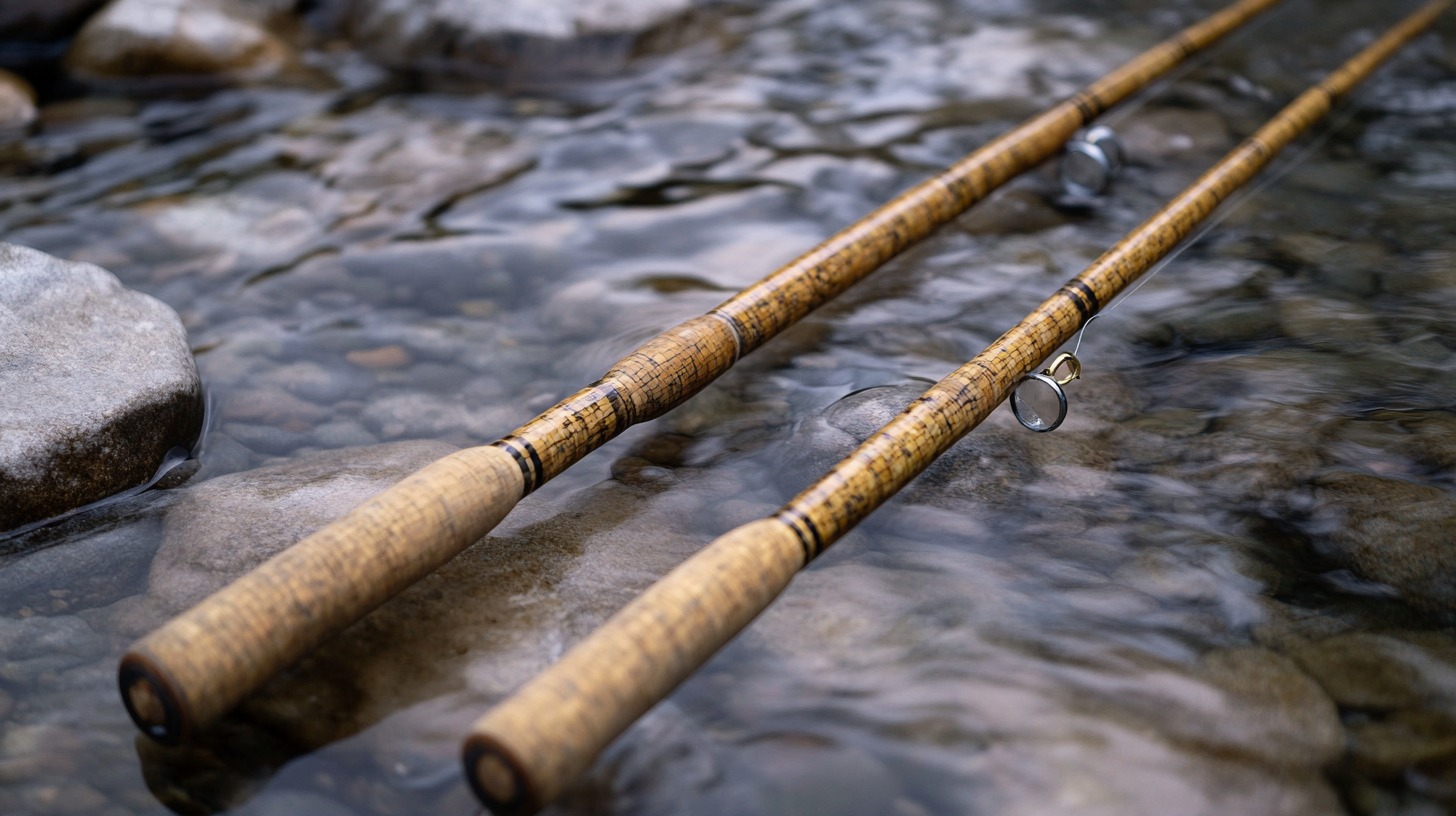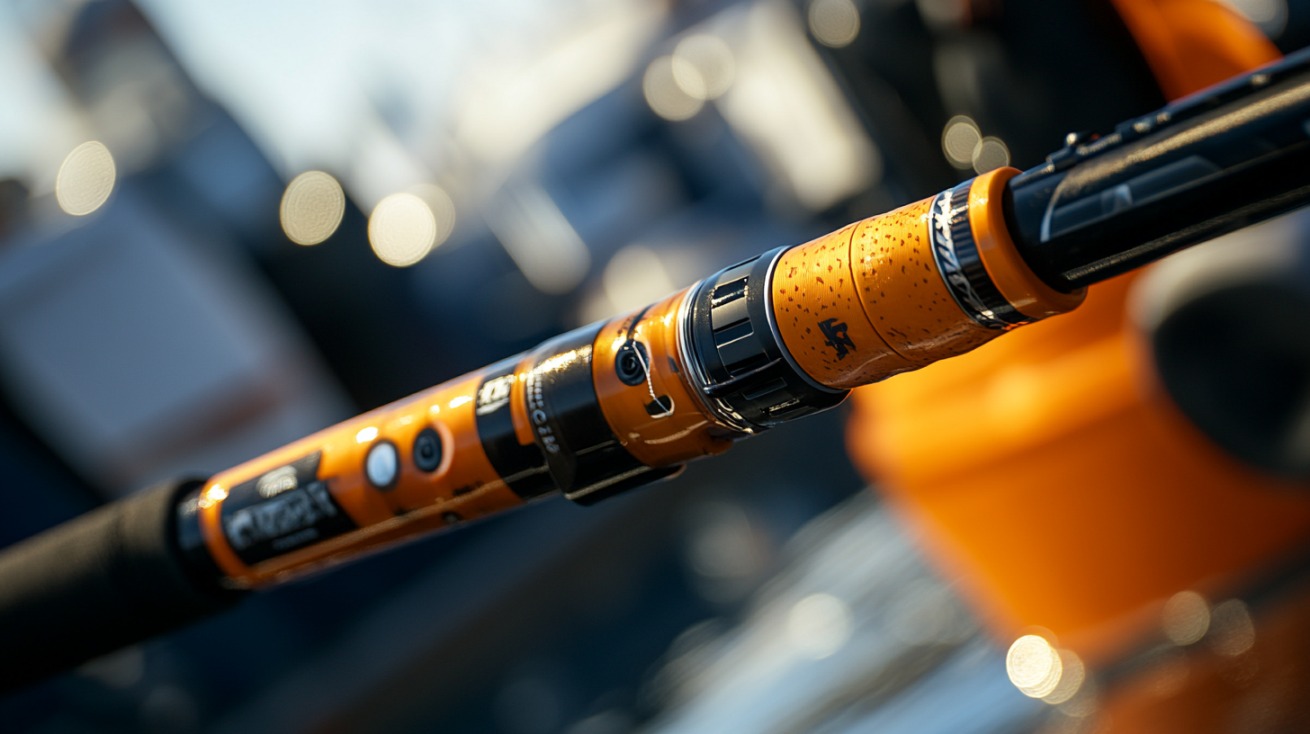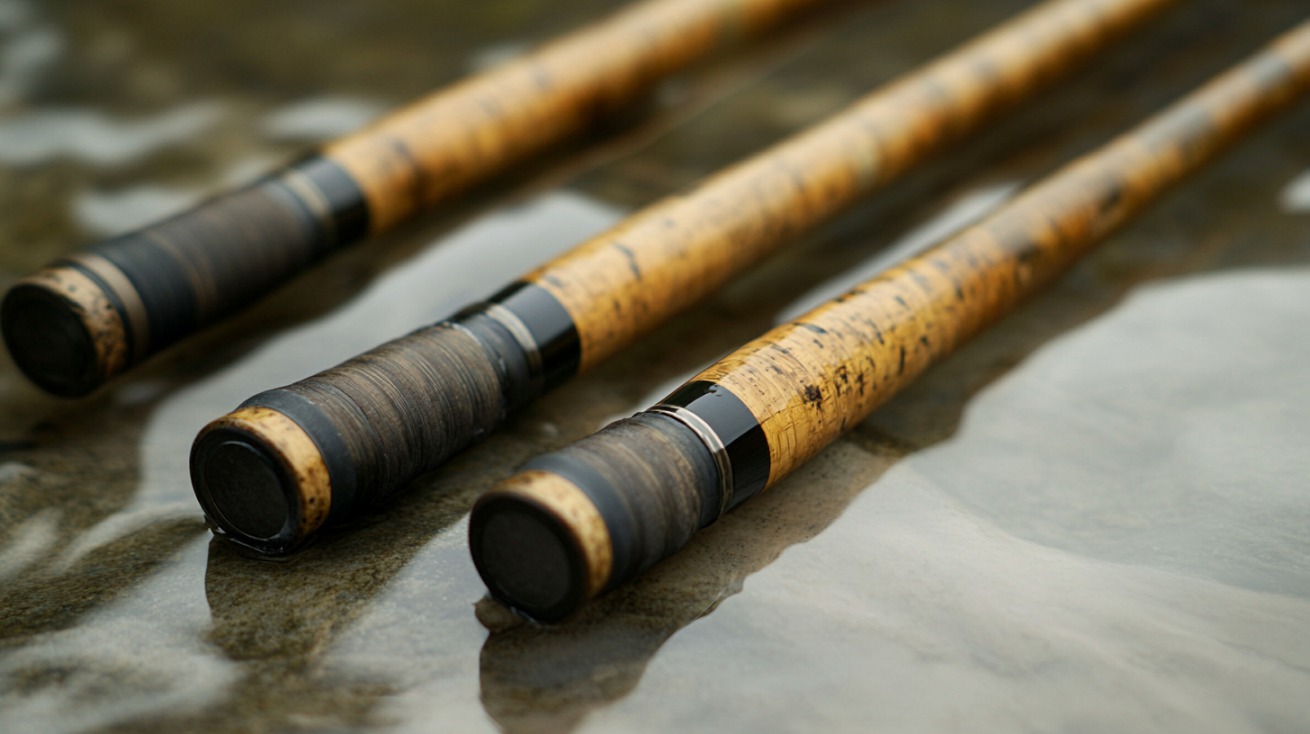Choosing the right fishing rod makes a noticeable difference in performance and overall enjoyment. Rods vary based on fishing style, species targeted, and the environment.
Rod length, material, action, power, and reel compatibility all factor into selecting the correct tool.
Each fishing scenario demands a rod with specific traits, and matching these to your needs helps improve catch rates and ease of use.
Rods for Carp Fishing
Carp fishing requires thoughtful rod selection. Anglers often face large, powerful fish that test both technique and gear.
Choosing a rod that matches the situation, long-distance casting, stalking the margins, or surface feeding can drastically improve success rates.
- Length 12ft
- Test Curve 3.0–3.25lb
- Usage: General carp fishing, mid-range casting
- Benefits: Good balance of casting power and fish-playing ability
Long-range rods come into play when fishing expansive lakes or pressured waters that require bait placed well past the margin.
Added length improves casting distance, and higher test curves ensure control over heavy leads and large carp.

- Length 12–13ft
- Test Curve 3.5–4lb
- Usage: Distance casting, large lakes
- Benefits: Increased power and distance, suitable for PVA bags or method feeders
Shorter rods work well for stalking, margin work, or tight swims where maneuverability matters more than distance.
Perfect for mobile anglers who rely on stealth and close-range tactics.
- Length 6–10ft
- Test Curve 2–3.5lb
- Usage: Margin fishing, overgrown banks
- Benefits: Lightweight, compact, easy to handle in tight areas
Specialized rods serve niche carp fishing techniques. Each design caters to specific tactics, increasing efficiency and angling accuracy.
These rods should be considered based on your preferred style of fishing.
- Action: Softer, more forgiving tip
- Usage: Surface fishing with floating baits
- Benefits: Gentle bait presentation, reduces fish spooking
Spod Rods:
- Test Curve 4.5–5lb or higher
- Usage: Casting spods/spombs loaded with bait
- Benefits: Handles heavy casting weights with ease
Marker Rods:
- Test Curve Similar to spod rods
- Usage: Feature finding using marker floats
- Benefits: Transmits bottom feedback well for mapping lakebeds
Rod choice directly affects bait placement, bite detection, and landing efficiency. Matching the rod to the intended purpose maximizes efficiency and reduces fatigue during long sessions.
Rods for Coarse Fishing

Coarse fishing covers a wide range of freshwater species, requiring rods that meet different challenges based on technique, water type, and target fish. Rod choice affects bait presentation, casting range, and how efficiently a fish can be landed.
Several rod types are commonly used in coarse fishing. Below are bullet points highlighting their characteristics and ideal use cases:
- Length 12–14ft
- Designed for casting light rigs accurately
- Best paired with small hooks and light lines
- Ideal for species like roach, rudd, and small bream
- Often used in still waters or gentle rivers where finesse matters
Float rods provide sensitivity and allow for controlled drifts of bait across the water. Longer rods improve line control, especially in windy conditions or when fishing at a distance.
- Length 10–14ft
- Built with powerful backbones
- Handle heavier feeders, leads, and strong currents
- Suitable for battling large fish in flowing rivers
- Often feature twin tips: a quiver tip for sensitivity and a stronger tip for power
Barbel rods must combine durability with enough responsiveness to detect bites. Rivers with rocky or snaggy bottoms require rods that can turn fish away quickly and with control.
- Length: 8–14ft
- Come with interchangeable quiver tips for various conditions
- Used for ledgering baits on bottom
- Perfect for bream, tench, carp, and other bottom feeders
- Offer casting flexibility and increased bite detection sensitivity
Feeder rods shine in situations where subtle takes are expected. A lighter tip reveals the faintest movement, while a heavier tip copes with fast-flowing water or larger feeders.
Choosing the appropriate rod supports better bait placement, improved bite detection, and a higher landing success rate.
Each rod type fulfills a specific task, and switching between them depending on location and species can make a noticeable difference in results.
Rods for Predator Fishing

Catching predators like pike, perch, zander, and catfish requires a very specific rod setup.
These species often strike hard, fight with intensity, and inhabit environments that test both gear and angler skill.
Choosing the right predator rod means focusing on strength, responsiveness, and adaptability to lure presentation.
A good predator rod must deliver accurate casts, transmit subtle takes, and possess the backbone to control a large fish in close quarters.
Several categories of predator rods exist, each with a tailored purpose. Below is a breakdown of key rod types used for various predator fishing techniques:
| Type | Length | Test Curve / Power | Primary Use | Ideal For |
|---|---|---|---|---|
| Deadbait | 10–12ft | 3–3.25lb | Static or suspended bait presentations | Stillwaters, slow rivers, pike, zander |
| Baitcasting | 6–8ft | Heavy power | Accurate casting with heavy lures | Tight cover, spinnerbaits, crankbaits, jerkbaits |
| Catfish | 9–12ft | 3.5lb+ | Heavy-duty fights with large fish | Snaggy rivers/lakes, big catfish |
| Drop Shot | 6–8ft | Light power, fast action | Finesse vertical techniques with soft plastics or live bait | Perch, zander, pressured or clear waters |
| Spinning/Lure | 6–9ft | Varies by species | Active lure fishing with spinning gear | Perch, trout, pike, zander (depends on length and casting) |
No matter the predator, rod selection should reflect both the environment and technique.
A sensitive tip helps detect subtle takes, while a solid backbone ensures control during the fight.
Precision matters when casting, but reliability matters even more when landing a powerful fish.
Rods for Sea Fishing

Saltwater fishing brings its own demands, strong currents, abrasive salt, and aggressive fish. Rods built for these conditions must be durable, corrosion-resistant, and capable of casting long distances or handling heavy battles.
Selecting the right rod depends on where you plan to fish and the species you’re targeting.
Beach rods stretch between 12 and 17 feet in length. Designed for surfcasting, these rods excel at launching large leads and baits far into the water to reach fish beyond the breaker line. Longer handles aid in generating powerful casting momentum.
Suitable for anglers standing on open shores where distance can make or break success.
Boat and uptide rods, in the 6–9ft range, are built with short, sturdy blanks. These rods deliver control when fishing over the side of a vessel, whether anchored or drifting.
Blank strength and dependable reel seats are key when wrestling large cod, conger, or ling.
LRF (Light Rock Fishing) rods focus on finesse. These rods, typically 6–9ft long, are tailored for delicate presentations using ultra-light lures.
Despite the lighter gear, sensitivity remains high, allowing for maximum feedback during retrieval.
- Material: Graphite or composite builds for strength and saltwater resilience
- Length: Varies significantly by location—longer for surf, shorter for boats
- Power: Medium-heavy to extra-heavy, depending on species and bait
- Action: Fast for jigging, moderate for long casts
- Reel Compatibility: Fixed spool for beach rods; multipliers often used on boat rods
Rods suited for saltwater use must be chosen based on fishing style. Shore fishing, vertical boat fishing, and finesse techniques all require different builds.
Matching the rod to the location and species helps improve casting efficiency, fish control, and the overall angling experience.
The Bottom Line
Matching your rod to the fishing method, environment, and target species is key to a rewarding angling session.
Build quality, rod action, power, and proper compatibility with reels and line weights should always be considered. Investing in the right rod helps deliver better accuracy, stronger hooksets, and more fun at the water’s edge. Of course, the first thing you should invest in and get is a fishing license. You can even get one at Walmart for a decent price!
Every cast becomes more effective when the gear is tailored to the fishing style.

